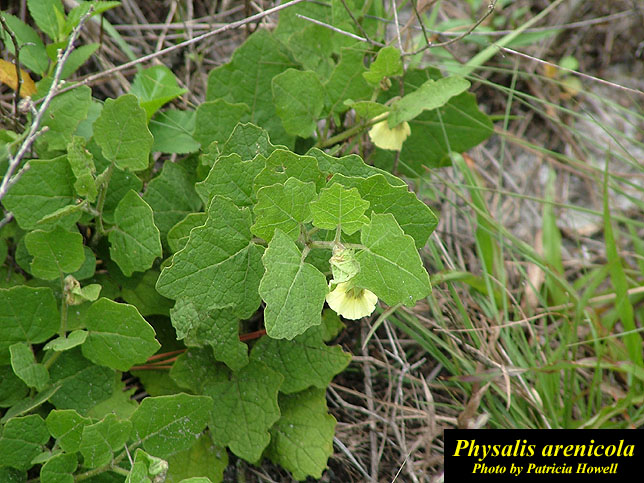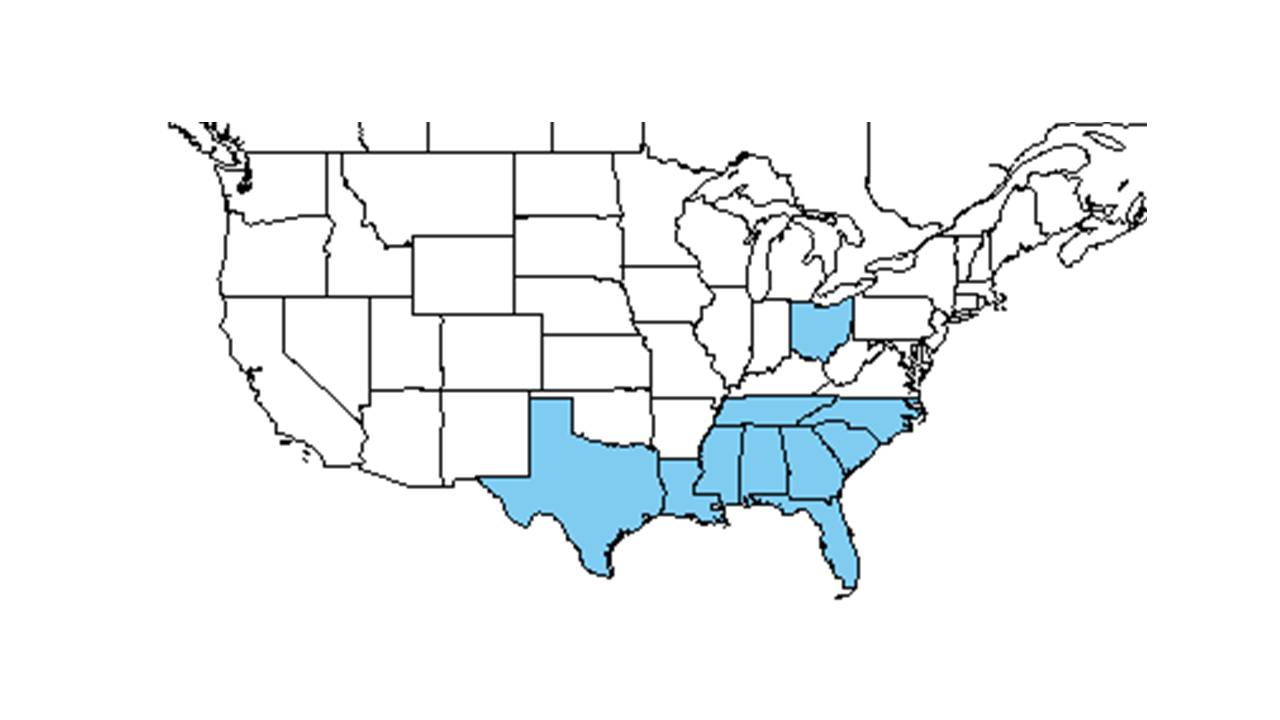Difference between revisions of "Physalis arenicola"
HaleighJoM (talk | contribs) (→Ecology) |
|||
| (One intermediate revision by one other user not shown) | |||
| Line 38: | Line 38: | ||
<!--===Fire ecology===--> <!--Fire tolerance, fire dependence, adaptive fire responses--> | <!--===Fire ecology===--> <!--Fire tolerance, fire dependence, adaptive fire responses--> | ||
<!--===Pollination===--> | <!--===Pollination===--> | ||
| − | <!--=== | + | <!--===Herbivory and toxicology===--> <!--Common herbivores, granivory, insect hosting, poisonous chemicals, allelopathy, etc--> |
<!--===Diseases and parasites===--> | <!--===Diseases and parasites===--> | ||
| Line 44: | Line 44: | ||
==Cultural use== | ==Cultural use== | ||
| + | The fruit can be used a substitute for tomatoes.<ref> Fernald, et al. 1958. Edible Plants of Eastern North America. Harper and Row Publishers, New York.</ref> | ||
| + | |||
==Photo Gallery== | ==Photo Gallery== | ||
==References and notes== | ==References and notes== | ||
Latest revision as of 12:36, 15 July 2022
| Physalis arenicola | |
|---|---|

| |
| Photo by Patricia Howell, Atlas of Florida Vascular Plants | |
| Scientific classification | |
| Kingdom: | Plantae |
| Division: | Magnoliophyta - Flowering plants |
| Class: | Magnoliopsida – Dicotyledons |
| Order: | Solanales |
| Family: | Solanaceae |
| Genus: | Physalis |
| Species: | P. arenicola |
| Binomial name | |
| Physalis arenicola Kearney | |

| |
| Natural range of Physalis arenicola from USDA NRCS Plants Database. | |
Common names: Cypresshead groundcherry; Sandhill groundcherry[1]
Contents
Taxonomic notes
Synonyms: none.[1]
Varieties: none.[1]
Description
Distribution
P. arenicola extends from Georgia, Alabama, and southern Mississippi, then south to Florida.[1]
Ecology
Phenology
It flowers from April to August and in October with peak inflorescence in June.[2]
Conservation, cultivation, and restoration
Cultural use
The fruit can be used a substitute for tomatoes.[3]
Photo Gallery
References and notes
- ↑ 1.0 1.1 1.2 1.3 Weakley, A.S. 2015. Flora of the southern and mid-atlantic states. Working Draft of 21 May 2015. University of North Carolina at Chapel Hill, Chapel Hill, North Carolina.
- ↑ Nelson, G. PanFlora: Plant data for the eastern United States with emphasis on the Southeastern Coastal Plains, Florida, and the Florida Panhandle. www.gilnelson.com/PanFlora/ Accessed: 12 DEC 2016
- ↑ Fernald, et al. 1958. Edible Plants of Eastern North America. Harper and Row Publishers, New York.